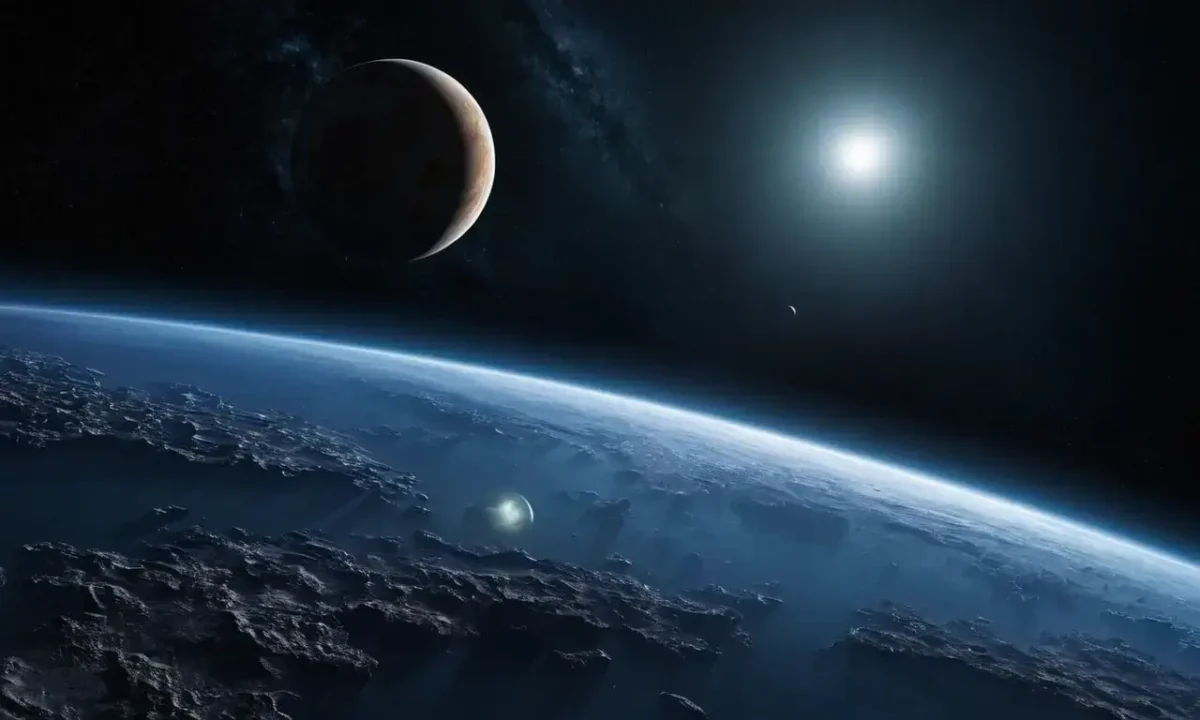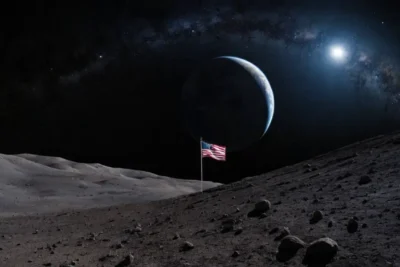
Absolute Zero: The Coldest Places in Space

The universe is a vast expanse of space, teeming with stars, planets, galaxies, and countless other celestial objects. While we often marvel at the beauty and wonder of these cosmic wonders, it's also fascinating to delve into the extreme conditions that exist within them. One such concept that captures our imagination is absolute zero, the theoretical lowest possible temperature in the universe. This point marks a state where all molecular motion ceases, leading to an intriguing paradox: a complete absence of energy and heat. While never directly observed due to technical limitations, scientists have identified regions in space that approach this threshold, offering valuable insights into the fundamental laws of physics and the conditions that exist in some of the most hostile environments imaginable.
This article delves into the concept of absolute zero, exploring its significance in physics and examining notable examples of extremely cold places within the universe. We'll discuss how scientists have identified regions where temperatures approach this theoretical limit, including the coldest place on the universe, the Boomerang Nebula. By understanding these extreme environments, we gain a deeper appreciation for the vastness and complexity of the cosmos.
Absolute zero: a theoretical concept
Absolute zero is not just a number; it represents a fundamental concept in physics that underpins our understanding of temperature and energy. In simple terms, temperature measures the average kinetic energy of particles within a system. When these particles move faster, the temperature increases. However, at absolute zero (-273.15 °C or 0 Kelvin), all molecular motion ceases. This means that the particles are not vibrating or moving; they are essentially frozen in place.
The concept of absolute zero is crucial for several reasons. It forms the basis for many thermodynamic laws and equations, including those related to heat transfer and entropy. Additionally, understanding this theoretical limit helps us comprehend the behavior of matter at extremely low temperatures, which has significant implications for fields like cryogenics and quantum mechanics.
Importance of temperature in physics
Temperature plays a vital role in various aspects of physics, influencing everything from the movement of atoms and molecules to the stability of stars. It's a measure of the average kinetic energy of particles within a system, directly impacting their behavior and interactions. The relationship between temperature and energy is fundamental: higher temperatures correspond to greater energy levels, leading to increased motion and activity.
Temperature also influences the properties of matter. For instance, solids have a fixed shape due to strong intermolecular forces, while liquids flow freely because their molecules can move around each other. Gases expand significantly at high temperatures as their particles gain kinetic energy and spread out. Understanding temperature is therefore essential for comprehending the behavior of matter in various environments.
Key players in understanding cold
Several key concepts are crucial when studying extreme cold: entropy, Bose-Einstein condensation, and quantum mechanics. Entropy refers to the disorder or randomness within a system. As temperature increases, entropy generally rises due to increased molecular motion. In contrast, at absolute zero, entropy reaches its minimum value because all particles are in a state of perfect stillness.
Bose-Einstein condensation is another fascinating phenomenon that occurs at extremely low temperatures. This occurs when bosons, a type of particle with integer spin, occupy the lowest energy state in a system. As temperature approaches absolute zero, these bosons begin to condense into a single macroscopic quantum state, leading to unique properties like superfluidity and superconductivity.
Finally, quantum mechanics plays a crucial role in understanding extreme cold. At the atomic level, particles exhibit wave-like behavior, meaning their position is not always precisely defined. This concept becomes particularly relevant when dealing with extremely low temperatures where quantum effects become more pronounced.
The search for absolute zero

Despite its theoretical significance, achieving absolute zero remains a significant challenge. It's practically impossible to cool matter down to this point using conventional methods like cooling systems or adiabatic processes. However, scientists have made progress in understanding the conditions that approach absolute zero through various techniques and experiments.
One such method is the use of superconducting materials. These materials exhibit zero electrical resistance below a critical temperature, allowing them to conduct electricity with no energy loss. This property has been exploited to create extremely sensitive thermometers capable of detecting minute changes in temperature. By measuring these subtle fluctuations, scientists can gain valuable insights into the behavior of matter at extreme cold.
Another approach involves studying the properties of gases under extremely low temperatures. For instance, researchers have observed superfluidity in helium-4 gas below 2.17 K. This phenomenon occurs when particles lose their individual identities and move as a single entity, exhibiting unique properties like zero viscosity. Studying these phenomena provides valuable insights into the behavior of matter at extreme cold.
Notable examples of extreme cold
Beyond theoretical considerations, several celestial objects in space exhibit temperatures that approach absolute zero. These include black holes, interstellar gas clouds, and even some regions within planetary nebulae. Each of these environments presents unique challenges for scientists trying to understand their properties.
Black holes are among the most fascinating objects in the universe due to their immense gravitational pull. As matter falls into a black hole's event horizon, it experiences extreme conditions that can lead to temperatures approaching absolute zero. This is because the intense gravity compresses matter, leading to extremely high densities and pressures. However, the singularity at the center of a black hole remains an enigma, with its properties still shrouded in mystery.
Interstellar gas clouds are another example of regions where temperatures approach absolute zero. These clouds contain vast amounts of hydrogen and helium gas that have been ejected from stars during their lifecycles. As these clouds evolve, they can become denser and colder over time. This process is influenced by factors like gravity, magnetic fields, and interactions with other interstellar objects.
Finally, planetary nebulae are another fascinating example of extreme cold environments in space. These nebulae are formed when dying stars expel their outer layers into space. As the gas cools down, it can become extremely dense and cold, leading to regions where temperatures approach absolute zero. Studying these nebulae provides valuable insights into stellar evolution and the processes that shape our universe.
Boomerang Nebula: the coldest place?
One of the most notable examples of extreme cold in the universe is the Boomerang Nebula. This young planetary nebula was confirmed as the coldest place in the universe in 2013, according to a study published in Nature. Located about 5,000 light-years away, the nebula is a testament to the incredible diversity and complexity of the cosmos.
The Boomerang Nebula formed when a dying star ejected its outer layers into space, creating a beautiful cloud of gas and dust. As this material cooled down over time, it became denser and colder, leading to regions where temperatures approached absolute zero. This extreme cold is attributed to the nebula's unique structure and the interaction between its various components.
The Boomerang Nebula has been extensively studied by astronomers using telescopes like Hubble and James Webb Space Telescope. These observations have provided valuable insights into the processes that shape planetary nebulae, including their formation, evolution, and eventual fate. Studying this nebula not only helps us understand the life cycle of stars but also provides a glimpse into some of the most extreme environments in the universe.
Black holes and interstellar medium
Black holes are another fascinating example of extremely cold places in space. These enigmatic objects possess such immense gravitational pull that nothing, not even light, can escape their grasp. As matter falls towards a black hole's event horizon, it experiences extreme conditions that can lead to temperatures approaching absolute zero.
The intense gravity of a black hole compresses matter into an incredibly small space, leading to extremely high densities and pressures. This process also generates immense heat, but due to the gravitational pull, this heat is quickly converted into energy that escapes the black hole's event horizon. As a result, the region surrounding a black hole remains extremely cold despite its intense activity.
Interstellar medium is another example of an environment where temperatures approach absolute zero. This gas and dust cloud fills the space between stars and plays a crucial role in star formation and evolution. The interstellar medium contains various components like hydrogen, helium, and heavier elements that interact with each other through collisions and magnetic fields. These interactions can lead to cooling and condensation, resulting in regions of extremely low temperature.
Future research
Understanding extreme cold environments in space is an ongoing endeavor for scientists worldwide. As technology advances and our understanding of the universe deepens, we can expect even more exciting discoveries about these fascinating places. Future research will likely focus on:
- Developing new techniques to probe extreme cold: This includes developing more sensitive thermometers and exploring novel methods like gravitational wave detection.
- Studying the formation and evolution of black holes: Understanding how black holes form and evolve will provide valuable insights into the life cycle of stars and the evolution of galaxies.
- Investigating the role of interstellar medium in star formation: Studying the interaction between gas clouds and stellar nurseries can help us understand how new stars are born.
By continuing to explore these extreme environments, we can unlock even more secrets about the universe and our place within it.
Leave a Reply





Related Links